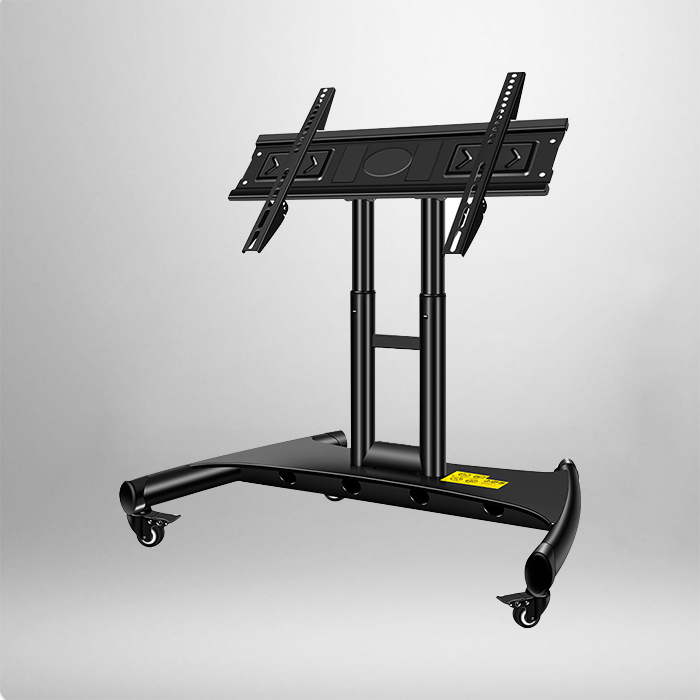
In today’s interconnected world, televisions have evolved beyond entertainment hubs into critical components of modern living and workspaces. Whether in homes, offices, hotels, or healthcare facilities, the need to mount TVs securely and ergonomically has grown exponentially. This is where TV brackets play a pivotal role. As versatile solutions for optimizing space and enhancing viewing experiences, TV brackets combine engineering precision with user-centric design to meet diverse needs.
Understanding TV Brackets
A TV bracket, also known as a TV mount, is a hardware device designed to securely attach a television to a wall, ceiling, or other structural surfaces. Unlike traditional TV stands, brackets free up floor space, reduce clutter, and enable flexible positioning for improved visibility and safety. Their applications span residential, commercial, and institutional environments, making them indispensable in modern interior design.
Types of TV Brackets
Fixed Brackets
Fixed brackets hold TVs in a stationary position close to the wall. Ideal for spaces where screen adjustment is unnecessary, they offer a sleek, low-profile appearance. These brackets are commonly used in lobbies, conference rooms, or bedrooms where a consistent viewing angle suffices.
Tilt Brackets
Tilt brackets allow vertical angle adjustments, enabling users to tilt the screen upward or downward. This feature is beneficial in rooms where TVs are mounted higher than eye level, such as above fireplaces or in elevated commercial displays.
Full-Motion Articulating Brackets
Full-motion brackets provide maximum flexibility, offering tilt, swivel, and extension capabilities. Users can pull the TV away from the wall, rotate it horizontally, or adjust its angle to suit different seating arrangements. These are ideal for open-plan living areas, retail spaces, or training rooms requiring dynamic screen positioning.
Ceiling Mounts
Designed for environments where wall mounting is impractical, ceiling brackets suspend TVs from overhead structures. They are frequently used in gyms, hospitals, or airports to optimize visibility without occupying wall space.
Key Considerations in TV Bracket Design
Modern TV brackets are engineered with a focus on durability, safety, and adaptability. Key design elements include:
Material Quality: High-grade steel or aluminum alloys ensure structural integrity, supporting TVs of varying sizes and weights.
Weight Capacity: Brackets are rated for specific load limits, ensuring compatibility with different TV models.
Cable Management: Integrated channels or clips organize power cords and HDMI cables, maintaining a clean aesthetic.
VESA Compliance: Standardized hole patterns ensure compatibility with most TV brands, simplifying installation.
Installation and Safety
Proper installation is critical for both performance and safety. Key steps include:
Stud Location: Identifying wall studs or reinforced concrete surfaces to anchor the bracket securely.
Leveling: Ensuring the TV remains perfectly horizontal to prevent strain on the bracket.
Professional Assistance: For heavy or complex installations, consulting certified technicians minimizes risks.
Safety standards such as UL certification or EN regulations further guarantee that brackets meet rigorous testing for stability and load-bearing capacity.
Applications Across Industries
TV brackets serve unique purposes in different sectors:
Residential: In homes, they maximize space in compact rooms and create immersive home theater setups.
Hospitality: Hotels use discreet brackets to enhance guest experiences without compromising décor.
Healthcare: Medical facilities employ antimicrobial-coated brackets for hygiene in patient rooms or waiting areas.
Education: Schools and universities utilize tilt brackets for clear visibility in lecture halls.
Retail: Stores leverage full-motion mounts to showcase promotional content dynamically.
The Future of TV Brackets
As TVs grow slimmer and smarter, brackets are adapting to support emerging technologies. Innovations include:
Motorized Mounts: Remote-controlled adjustments via apps or voice commands.
Low-Profile Designs: Ultra-slim brackets for OLED and QLED TVs that sit flush against walls.
Sustainability: Recyclable materials and energy-efficient manufacturing processes.
By blending robust engineering with ergonomic design, they address the evolving demands of space optimization, safety, and user convenience.


